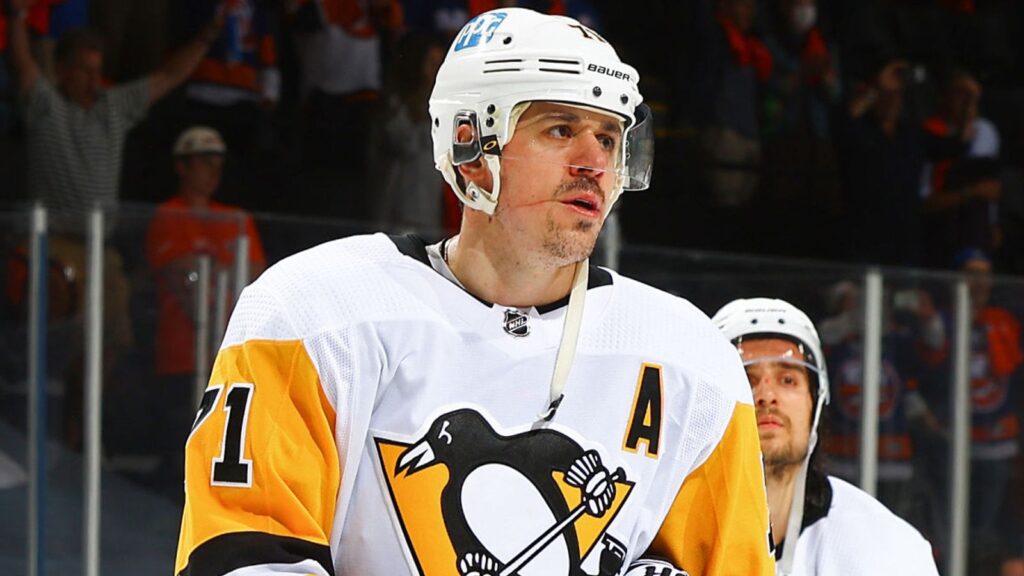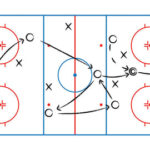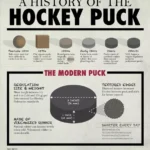Hockey trades in the NHL involve teams exchanging players, draft picks, or other assets. Trades aim to improve team performance or manage salary cap.
Hockey trades are pivotal in shaping NHL team rosters. Teams use trades to address weaknesses, acquire key players, or gain future draft picks. Trades are especially common around the trade deadline and during the offseason. These transactions can dramatically alter a team’s dynamics and prospects.
Both general managers and coaching staff play crucial roles in deciding trade moves. Trades must comply with the NHL’s salary cap regulations, ensuring that team budgets remain balanced. Fans eagerly follow trade news, as a single trade can impact a team’s success for years. Understanding how trades work enhances the appreciation of the strategic depth in the NHL.

Credit: www.lewistownsentinel.com
Introduction To Nhl Trades
The NHL trade system is fascinating. It influences team strategies and player careers. Understanding this system helps fans appreciate the game more.
The Basics Of Trading
Trading in the NHL involves teams exchanging players, draft picks, or other assets. These trades aim to improve team performance or manage salary caps.
Teams evaluate their needs and make decisions based on current goals. They consider player skills, team dynamics, and financial implications.
Key Terms And Definitions
| Term | Definition |
|---|---|
| Trade Deadline | The last day teams can make trades for the season. |
| Salary Cap | A limit on the total amount teams can spend on player salaries. |
| Draft Pick | The right to select a player in the NHL Draft. |
| Player Buyout | When a team pays a player to terminate their contract early. |
Knowing these terms helps understand trade discussions and news.
Fans can follow trades more closely and predict team strategies.
Trade Deadline Dynamics
The NHL trade deadline is a crucial period in the hockey season. Teams make important decisions about their rosters. This period is filled with excitement and tension. Understanding the dynamics can help fans appreciate the strategy involved.
Importance Of The Deadline
The trade deadline marks the last chance to change rosters. Teams aim to improve before the playoffs. There are two types of teams during this time:
- Buyers: Teams looking to add talent for a playoff push.
- Sellers: Teams trading players for future assets.
Buyers trade for experienced players to strengthen their lineup. Sellers trade players to gain draft picks or prospects. This balance affects each team’s future.
Last-minute Deals
Last-minute deals bring the most excitement. These deals often happen just before the deadline. Teams wait to get the best value for their trades.
Here are some factors that influence last-minute deals:
- Player Performance: Recent performances can boost trade value.
- Injuries: Injuries force teams to make quick decisions.
- Team Needs: Teams assess their needs and act accordingly.
Last-minute trades can change a team’s fortune. A well-timed trade can lead to playoff success. Fans eagerly await these deals, hoping for a game-changer.
Role Of General Managers
The General Manager (GM) plays a crucial role in the NHL. They make important decisions about team trades. GMs shape the team’s future. Their skills impact the team’s success. Let’s explore how GMs work their magic.
Decision-making Process
GMs must evaluate their team’s needs. They assess strengths and weaknesses. This helps them decide which players to trade. They consult with coaches and scouts. They analyze player stats and performance. GMs also consider salary caps. They balance short-term gains with long-term goals.
- Assess team needs
- Consult with coaches
- Analyze player performance
- Consider salary caps
- Balance short-term and long-term goals
Negotiation Tactics
GMs use various tactics to negotiate trades. They often start with a proposal. They offer players or draft picks. Negotiations involve back-and-forth discussions. GMs aim to get the best deal. They may use leverage to gain an advantage. Timing is also crucial in negotiations.
| Tactic | Description |
|---|---|
| Proposal | Initial offer to trade players or picks |
| Leverage | Using assets to gain an advantage |
| Timing | Making moves at the right moment |
Player Valuation
Understanding player valuation in the NHL is crucial for successful trades. Teams must accurately assess a player’s worth before making decisions. This process involves analyzing various factors to determine the player’s value.
Assessing Player Worth
Teams use multiple criteria to assess a player’s worth. These criteria include age, skill level, and potential. The player’s contract and salary also play a significant role. Younger players with high potential are often valued more. Experienced players can also be valuable if they bring leadership and stability.
Impact Of Performance Metrics
Performance metrics are key in valuing a player. Metrics like goals, assists, and plus-minus ratings are crucial. Teams also look at advanced stats like Corsi and Fenwick. These metrics help teams understand a player’s impact on the ice. Consistency in performance can boost a player’s value significantly.
Here’s a table showing common performance metrics and their importance:
| Metric | Importance |
|---|---|
| Goals | High |
| Assists | High |
| Plus-Minus | Moderate |
| Corsi | High |
| Fenwick | High |
Teams also consider a player’s injury history. Frequent injuries can decrease a player’s value. Durability is a key factor in player valuation. A player who stays healthy is more valuable to the team.
Understanding these factors helps teams make informed decisions. Accurate player valuation can lead to successful trades and a stronger team.
Cap Space And Contracts
Understanding how trades work in the NHL requires knowing about cap space and contracts. These two elements are crucial in maintaining a balanced and competitive team.
Salary Cap Management
The NHL has a salary cap that limits how much teams can spend on players. Each team must stay under this cap. This ensures fair competition. The salary cap can vary each season based on league revenues.
Teams need to manage their cap space wisely. They have to consider both current and future salaries. If a team exceeds the salary cap, they face penalties. This can include fines and loss of draft picks.
Here’s a quick look at how teams manage their cap space:
- Track all player salaries
- Plan for future contract renewals
- Consider the impact of trades on cap space
Some teams may trade players to free up cap space. They can then sign new players or extend contracts of current players.
Contract Clauses
NHL player contracts often include specific clauses. These clauses can affect how trades are made. Here are some common contract clauses:
| Clause | Description |
|---|---|
| No-Trade Clause (NTC) | Player cannot be traded without their consent. |
| No-Movement Clause (NMC) | Player cannot be traded, waived, or sent to minors without consent. |
| Modified No-Trade Clause (M-NTC) | Player provides a list of teams they can be traded to. |
These clauses give players control over their career moves. They can choose to stay with a team or approve specific trade destinations. Teams must navigate these clauses when making trade decisions.
Understanding cap space and contracts helps teams build competitive rosters. It also ensures they comply with league rules.
Trade Strategies
Trade strategies in the NHL involve intricate planning and foresight. Teams must balance immediate needs and future goals. Understanding these strategies is crucial for fans and analysts alike.
Short-term Vs. Long-term Goals
Teams often face a choice between short-term success and long-term growth. A short-term strategy focuses on immediate gains. This might involve trading draft picks for experienced players. These trades aim to boost the team’s performance quickly.
On the other hand, a long-term strategy emphasizes future potential. This could mean acquiring young prospects or draft picks. The goal is to build a strong foundation for the future. Balancing these goals is a key part of a team’s strategy.
Rebuilding Vs. Contending
Teams in the NHL often fall into two categories: rebuilding or contending. Rebuilding teams focus on developing young talent. They may trade veteran players for draft picks. This helps them gather assets for future success.
Contending teams aim for immediate success. They might trade young prospects for experienced players. Their goal is to win championships in the near term. Both strategies require careful planning and execution.
| Strategy | Focus | Common Trades |
|---|---|---|
| Short-Term | Immediate Gains | Draft Picks for Veterans |
| Long-Term | Future Success | Veterans for Draft Picks |
| Rebuilding | Developing Talent | Veterans for Prospects |
| Contending | Winning Now | Prospects for Veterans |
Trade Approval And Finalization
The trade process in the NHL is exciting but complex. Understanding how trades get approved and finalized helps fans appreciate the behind-the-scenes action. This involves league approval and handling paperwork and logistics.
League Approval Process
Before a trade becomes official, it needs approval from the NHL. Both teams must report the trade to the league office. The league reviews the trade for fairness and compliance with league rules.
The NHL checks several factors. These include team salary caps, player contracts, and any no-trade clauses. If everything checks out, the league gives the green light.
Paperwork And Logistics
Once the league approves the trade, teams handle the paperwork. This involves filing the required documents with the league office. Each team must update their rosters and inform the players involved.
Logistics play a key role here. Players may need to relocate quickly, often traveling to join their new teams. Teams arrange travel, housing, and other essentials to help players settle in.
Trades can happen fast or take time. The speed depends on the complexity of the trade and the logistics involved. Fans eagerly await the final announcements, watching how trades shape their favorite teams.

Credit: www.youtube.com
Notable Historical Trades
Hockey trades in the NHL have shaped the league’s history. Some trades have changed the fate of teams and players forever. Let’s explore some of the most notable historical trades in NHL history.
Game-changing Deals
Some trades have had a massive impact on the game. Here are a few examples:
| Trade | Teams Involved | Year | Impact |
|---|---|---|---|
| Wayne Gretzky | Edmonton Oilers to Los Angeles Kings | 1988 | Boosted hockey’s popularity in the U.S. |
| Eric Lindros | Quebec Nordiques to Philadelphia Flyers | 1992 | Quebec got future stars; Flyers got a superstar. |
| Patrick Roy | Montreal Canadiens to Colorado Avalanche | 1995 | Led Avalanche to two Stanley Cups. |
Lessons Learned
Not all trades go as planned. Here are some lessons teams have learned:
- Patience Pays Off: Teams should not rush into trades. Patience often brings better deals.
- Scout Thoroughly: Good scouting is crucial. Teams need to evaluate players accurately.
- Consider Chemistry: Team chemistry matters. A big-name player might not always fit well.
Trades can make or break a season. Understanding past trades helps teams make better decisions.
Impact On Players And Teams
Hockey trades in the NHL can have a profound impact on both players and teams. Trades can alter team dynamics and force players to adapt quickly. Understanding these changes helps in grasping the full picture of hockey trades.
Player Adjustments
Players often face significant adjustments after a trade. These changes can affect their personal and professional lives.
- Relocation: Players may need to move to a new city.
- Family Impact: Families also need to adjust to the new location.
- New Systems: Players must learn new team strategies quickly.
- Team Role: The player’s role can change with the new team.
Adapting to a new team can be challenging. It requires mental and physical adjustments. Players must also build new relationships with teammates.
Team Chemistry
Team chemistry is crucial for success in the NHL. Trades can either enhance or disrupt this balance.
| Positive Impact | Negative Impact |
|---|---|
| Enhanced skills and depth | Disrupted team dynamics |
| New strategies and plays | Players may feel unsettled |
| Filling team gaps | Temporary performance dips |
Effective communication is key to maintaining team chemistry post-trade. Coaches and players must work together. They need to integrate new players smoothly.
Fan Reactions And Media Coverage
Hockey trades in the NHL create excitement and drama. Fans react strongly, and the media provides in-depth coverage. This dynamic interplay shapes public opinion and fuels discussions.
Public Perception
Fans express their emotions on social media platforms. They celebrate or criticize trades based on their team’s gains or losses. Some fans feel hopeful about new prospects. Others mourn the departure of favorite players.
Public perception can sway quickly. A trade seen as risky may later become genius. Fans often rely on expert opinions to form their own views. Emotional investment in the team heightens these reactions.
Media Speculation
The media plays a crucial role in trade discussions. Journalists and analysts speculate about possible trades. They provide insights into team strategies and player values.
Media coverage includes:
- Breaking news about confirmed trades
- Expert analysis of trade impacts
- Interviews with players and coaches
Speculation keeps fans engaged. It also builds anticipation for the trade deadline. The media uses various platforms to disseminate information:
| Platform | Description |
|---|---|
| Television | Live coverage and expert panels |
| Social Media | Instant updates and fan interactions |
| Online Articles | In-depth analysis and opinion pieces |
Media speculation creates a narrative around trades. This influences how fans perceive and react to changes in their teams. The constant flow of information keeps the hockey community buzzing with activity.

Credit: www.nhl.com
Conclusion
Understanding hockey trades in the NHL can enhance your appreciation of the sport. Teams strategize to build the best roster. Knowing the rules and processes involved helps fans follow the action closely. Keep these insights in mind to stay engaged with your favorite team’s moves and the league’s dynamic nature.


